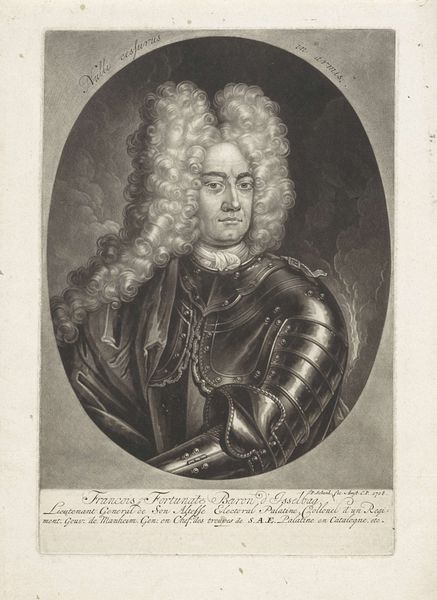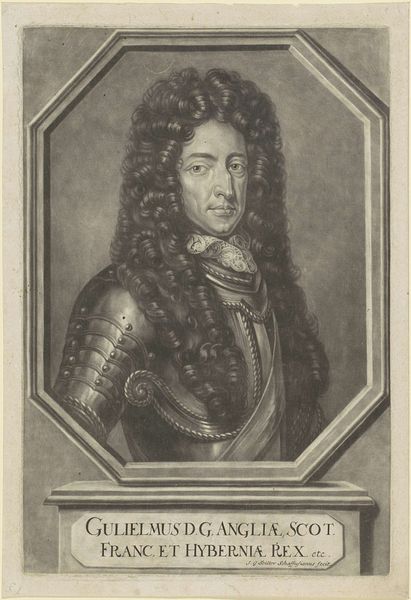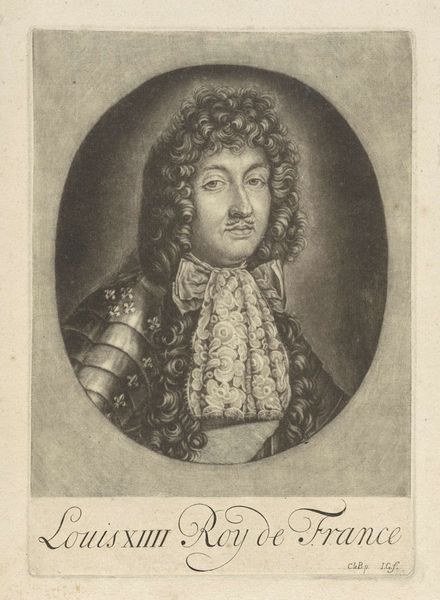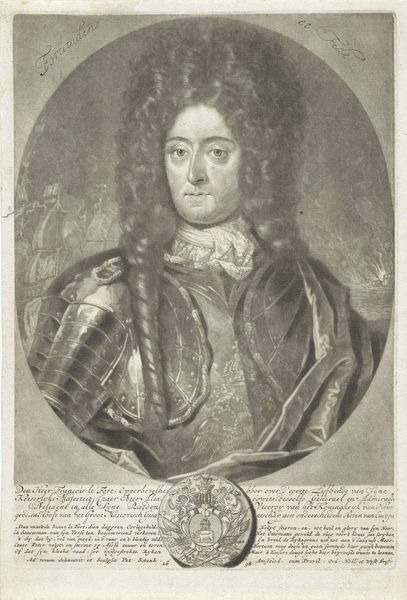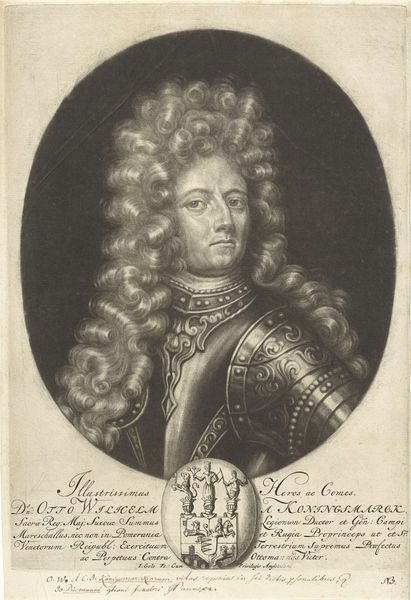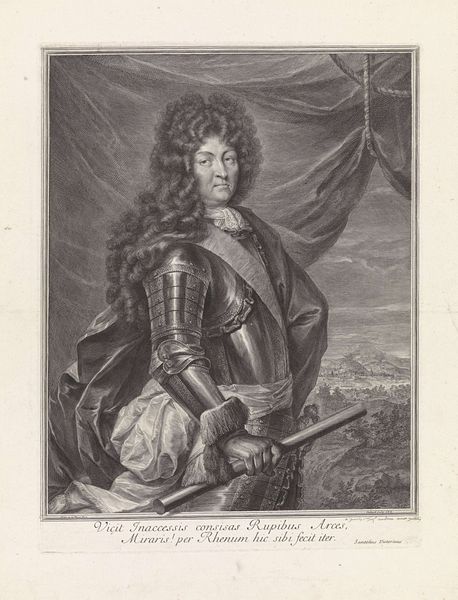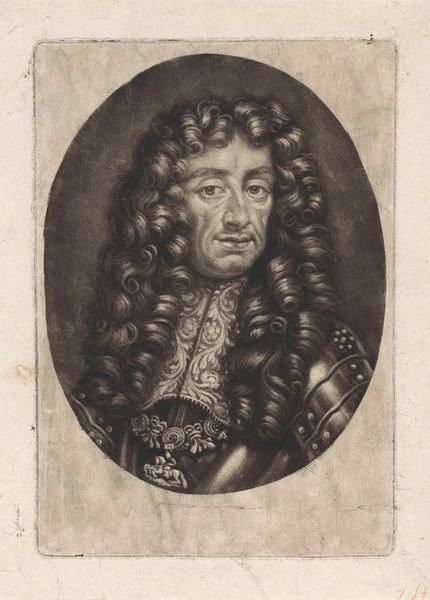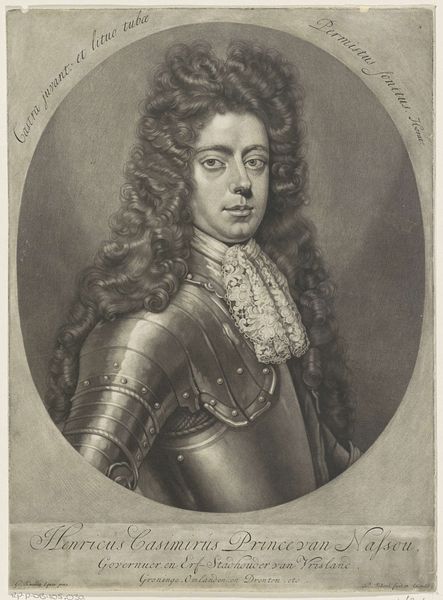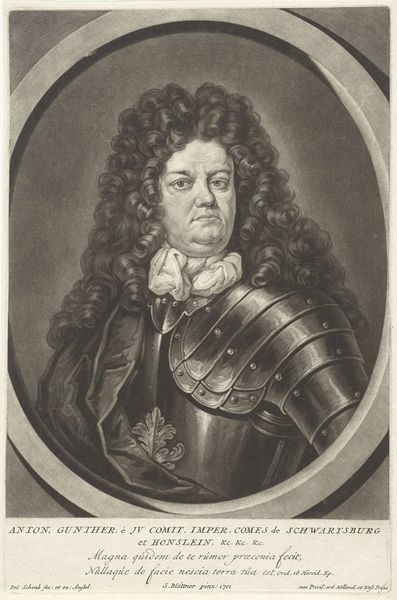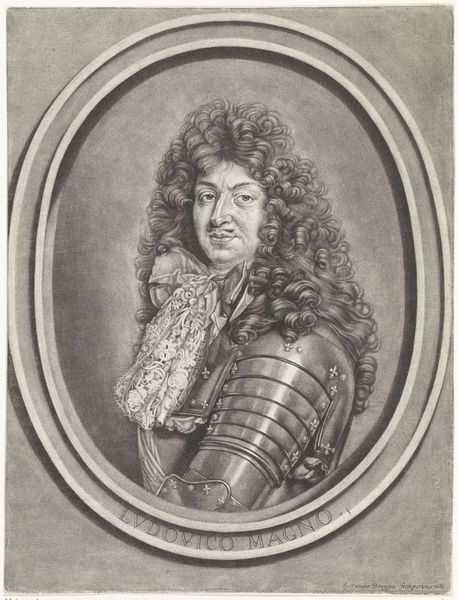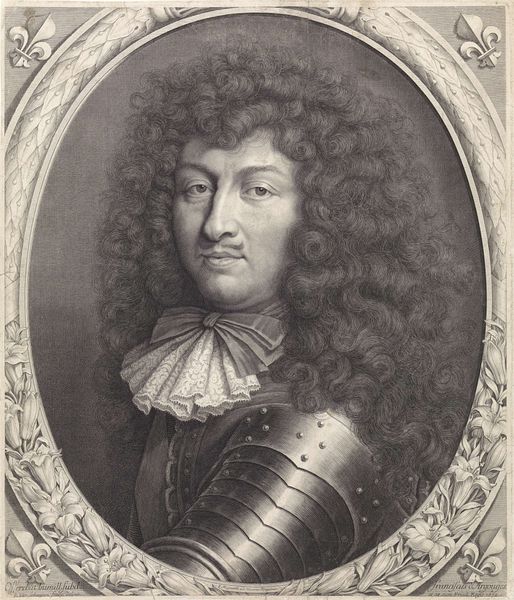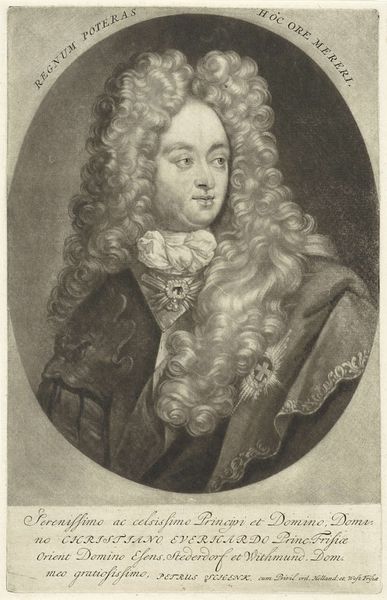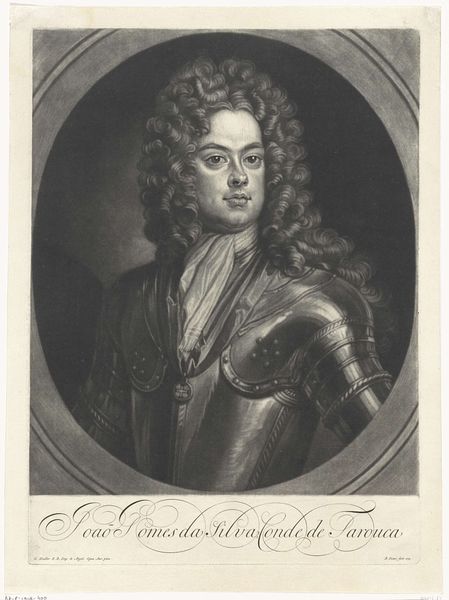
print, etching, engraving
#
portrait
# print
#
etching
#
romanticism
#
portrait drawing
#
engraving
Dimensions: 240 mm (height) x 160 mm (width) (plademaal)
Curator: What a striking figure. Erling Eckersberg completed this engraving, a print titled "Niels Juel," in 1842. The work is currently held here at the SMK, the National Gallery of Denmark. Editor: The immediate impression is power, isn't it? That towering wig, the gleam of the armor, and that steely gaze convey undeniable authority. It almost feels like a theatrical performance of strength. Curator: Juel was a Danish admiral, a celebrated naval hero. The engraving is very much designed to promote the values and power of the Danish navy within a Romantic-era framework. Notice the idealized presentation of him; every element reinforces his stature. Editor: Absolutely. The symbols tell their own story. The armor signifies not just protection, but also valor and martial prowess. And even the elaborate wig isn't mere vanity. It became a symbol of status and belonging amongst the elite military leaders of his age, a visual language understood across European courts. Curator: That is well noted. The very fact that the print was widely disseminated points to a deliberate effort to cultivate and maintain the image of national strength at a critical historical juncture. Niels Juel becomes more than just a person, but a powerful symbolic entity for his nation. Editor: The light, though subtle in an engraving like this, helps sculpt Juel's face, lending him that determined expression. The almost unfinished sketch of his hand reminds us of our incomplete memories of our heroes, of their deconstruction, re-examination, and eventual reimagining through culture. Curator: Precisely! Consider too, the role of prints and engravings like these. They bring historical figures into a much wider public sphere. Eckersberg was no doubt conscious of this, carefully crafting an image for mass consumption, shaping how the country remembered Juel's legacy. Editor: That subtle contrast of the highly finished upper body and sketchier arms lends a dynamic quality to the composition, doesn't it? This dynamic hints at latent energy ready to explode and drive his army through all manner of travails. Curator: Yes, Eckersberg positions Juel at a critical intersection. He’s a historical figure but now also a figure in national cultural consciousness. I find this work a powerful example of art serving very particular cultural and historical purposes. Editor: I see a continued interplay between symbols of might and vulnerability; history becomes something almost alive as it filters down to the masses. It reminds us of how carefully constructed our cultural memory truly is.
Comments
No comments
Be the first to comment and join the conversation on the ultimate creative platform.
